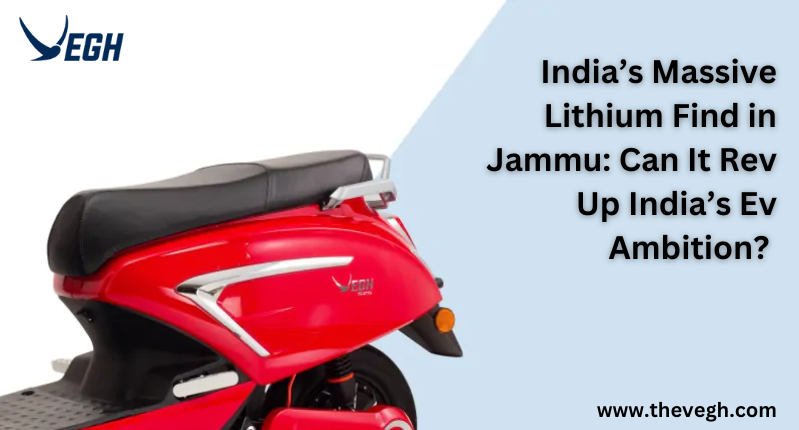
The country’s EV ambition has been a source of great excitement and optimism, especially after the recent discovery of massive lithium deposits in Jammu. But can this newfound resource really help rev up India’s EV ambition? Will this find re-shape India’s future as an EV powerhouse? The answer to these questions lies in several factors, including mining laws, extraction, and pricing. However, the potential implications of India’s Lithium find could certainly catalyze the EV industry’s current metamorphosis.
Lithium is a key ingredient in EV batteries, and with demand for EVs expected to sky-rocket in coming years, securing a reliable source of Lithium is crucial. India currently imports most of its lithium requirements, but the new find could help the country become self-sufficient – and even a major global supplier.
The deposit is estimated to contain around 5.9 million tonnes of lithium ore, making it one of the largest finds in the world. And with India aiming to have the majority of its vehicles electrified by 2030, this could be a much-needed boost.
The Indian government has been working to promote EVs, with several initiatives and targets set for their adoption. The discovery of the new lithium deposits could help to accelerate these efforts and make India a major global player in the EV market. It could also create thousands of job opportunities and support the development of a secure, reliable, and green energy source for the country.
India is the world’s most populous country and is projected to be one of the world’s leading economies by 2027, with an annual growth rate of 7.5% since 2016. In May 2017, the International Energy Agency (IEA) released its first-ever report on electric vehicles (EVs) in India. IEA found that EV sales accounted for only 0.1% of total light-duty vehicle sales in India. Since then, EV sales have grown rapidly, with a surge of over 2000% between 2019 to 2022. The IEA expects EV sales in India to reach 2% of total light-duty vehicle sales by 2030, creating over $1000 billion opportunity.
The Indian government has ambitious plans for EVs to have all new vehicles sold in India be electrically powered by 2030. To achieve this goal, the government has implemented several policies and initiatives, including:
The discovery of lithium deposits in Jammu and Kashmir could play a significant role in helping India achieve its EV goals. The estimated lithium reserves in Jammu and Kashmir could be enough to meet India’s demand for EVs for the next 20-30 years. It could help to make EVs more affordable, as India would not have to rely on importing lithium from other countries. It could accelerate India’s EV ambitions by making them more affordable and helping to ensure a steady supply of materials for the production of EVs. The Indian government’s policies and initiatives, combined with this new source of lithium, could help India achieve its goal of having all new vehicles sold in India be electrically powered by 2030.
With the right policies in place, these deposits could significantly boost the country’s EV industry, creating new opportunities for companies operating in this space.
Several potential benefits would accrue to EV companies due to the development of these lithium resources. First, it would provide a secure and reliable supply of raw materials for EV batteries. It is critical to ensure the EV industry’s long-term viability in India.
Second, it would create new opportunities for investment and job creation in the EV value chain. Developing a domestic battery manufacturing industry would be a crucial part of this and would provide a much-needed boost to the country’s manufacturing sector.
Third, it would help to increase competition in the Indian EV market, which would ultimately benefit consumers. There are very few players operating in this space, but with the influx of new investment that is likely to come with the development of lithium resources, this is likely to change. This increased competition will help to drive down prices and make EVs more affordable for Indian consumers.
Lastly, it could help reduce oil imports (currently at $150 billion per year) and reduce air pollution and respiratory diseases (which cause an estimated 10-12 lakh deaths per year in India).
For these benefits to be realized, however, the Government must put the proper policy framework in place. The Government must also ensure that these resources are developed to maximize their benefits for the country as a whole.
India’s massive Lithium find in Jammu is encouraging news for the country’s electric vehicle ambitions. As it stands, India has a promising future in being an EV leader, and this discovery will no doubt help us realize this goal. With further exploration of this resource and continued commitment to green energy initiatives, India could be one of the world’s largest producers of electric vehicles within a few years. Vegh is committed to achieving India’s EV ambition with sustainable and economic mobility through our electric scooters.